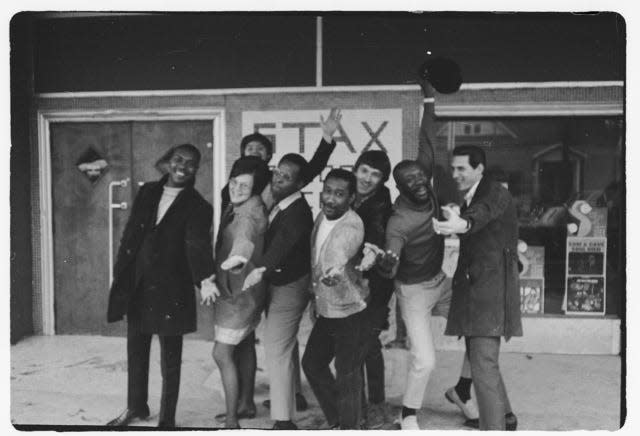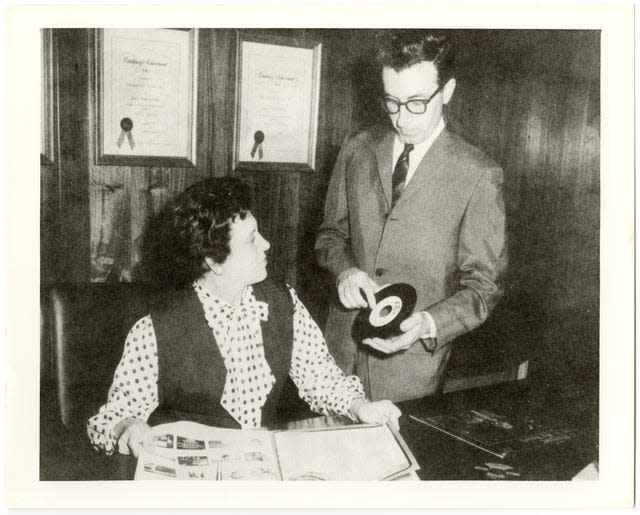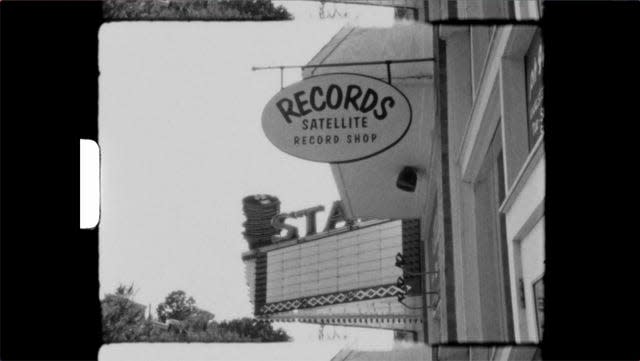'Stax' doc looks at extraordinary music studio that fell to financial and racial struggles
Booker T. Jones was in math class at Booker T. Washington High School in Memphis when his life suddenly changed forever.
David Porter, a fellow student and musician, told Jones he and his saxophone were needed immediately down at a recording studio in largely Black south Memphis that was run by a white brother and sister, Jim Stewart and Estelle Axton. The first two letters of their last names gave the studio its snappy moniker: Stax.
"David pushed past that green curtain at 926 East McLemore with me following, and that was the moment for me," Jones tells USA TODAY, recalling his first session on the Carla and Rufus Thomas 1960 hit, "Cause I Love You."
"All that talent in one place, my, my," says Jones, a multi-instrumentalist best known for the 1962 Booker T. and the MGs hit "Green Onions." "It was invigorating and energizing. It was a privilege."

Anyone needing a crash course on the improbable story of Stax Records – from its meteoric highs to its sad lows – would do well to take in HBO's "Stax: Soulsville U.S.A.," a two-part, four-hour documentary by Jamila Wignot ("Ailey"). The first part debuts May 20, with the rest airing May 21. All four episodes will be available to stream on Max on May 20.
The musicians associated with the little label that could consists of a who's who of Southern soul. Drum roll please: Otis Redding ("(Sittin On) The Dock of the Bay"), Sam & Dave ("Soul Man"), the Bar-Kays ("Soul Finger"), Albert King ("Born Under A Bad Sign"), Johnnie Taylor ("Who's Making Love"), Isaac Hayes ("Do Your Thing"), Wilson Pickett ("In The Midnight Hour"), Eddie Floyd ("Knock On Wood"), the Staple Singers ("Respect Yourself") ... not to mention Jones and his MGs – which included guitarist Steve Cropper, bassist Duck Dunn and drummer Al Jackson Jr. – as well as Porter, whose legendary songs include "Hold On, I'm Coming" and "Soul Man" for Sam & Dave.
The magic of the Stax sound was rooted in something simple: freedom. Musicians and producers felt empowered to experiment together, share ideas and record spontaneously, a stark contrast to the more typical studio approach of the day that found arrangers telling musicians exactly what they had to play. The soul of those musicians generated the soul music that raced across the airwaves from coast to coast.
'Stax' dives deep into the studio's hits but also it troubled days, as financial and social issues surfaced
But "Stax" is no mere recounting of an endless hit parade. Director Wignot goes deep into difficult territory that includes business difficulties and social upheavals, both of which rocked the studio's musicians, its white founders and its Black creator-in-chief, Al Bell.
The financial challenges were the result of the initially welcome interest in the Memphis label on the part of Jerry Wexler and his powerful Atlantic Records label, which inked a deal with Stax that allowed its talented artists much greater distribution than would have been otherwise possible.
"The New York guys swooped in, which was a good thing and bad thing," recalls Jones. "That got our music around the world. But that's also the music business, people making money off your sound."
Eventually, in the late '60s, Atlantic and Stax parted ways, and Atlantic made off with all of Stax's master tapes, per a contractual clause that founder Stewart had not honed in on.

The label had to effectively start over, which is when Bell, a former DJ and a master of promotion, began to work his magic and rebuilt Stax's roster of stars and hits. Among Bell's greatest accomplishments: orchestrating the famous 1972 Wattstax concert in Los Angeles and, the same year, campaigning successfully to land Isaac Hayes a Best Original Song Oscar for "The Theme from Shaft."
For Booker T. Jones, the camaraderie between the races at Stax sometimes was only skin-deep
Race plays a large role in the Stax story. On the one hand, the studio was a rare haven for interracial collaboration, especially in the South where Blacks and whites rarely fraternized publicly in the late '50s.
"Mrs. Axton would see Black kids hanging around the studio and invite them in," says Jones. "There would be no Stax without her. She mortgaged her house to keep it going. She was the mother of the company, and she was white."

But the good vibes created when the tapes were rolling sometimes were challenged by the sheer force of the turbulent times. When the Rev. Martin Luther King Jr. was assassinated at Memphis' Lorraine Motel, the event created a deep fracture for Jones.
In the documentary, he expresses shock that none of his white bandmates, named guitarist Cropper and bassist Dunn, brought up King's killing. The doc then cuts to a surprised Cropper, who says that he had no idea Jones felt that way at the time, and that he wishes his keyboardist leader had said something.
"The social chasm just shocked me," Jones tells USA TODAY. "I took so much for granted. To find out, even in your own home ..." His voice trails off.
Director Wignot says Jones felt disheartened that the bonds over music with his white friends didn't extend further. "We were on a panel, and he said simply, 'It was an interesting time, because we all loved the music, so we just lied to ourselves and we lied to each other. And at some point the real world came in, and it collided with all that.'"
The real world ultimately led to Stax's demise. Money woes and legal snags saw the label die and its landmark building razed. While across town Elvis's famous Sun Studios remains a tourist attraction, today there's a sign where Stax once stood, its original music-filled walls gone. (Fortunately, its place for the last few decades is the Stax Museum of American Soul, as well as the Stax Music Academy.)
In many ways, the Stax story seems wholly improbable, says 'Stax' director Jamila Wignot
Wignot says that while she's glad she told the Stax story with warts and all, she hopes the broader messages of positivity will win out over the studio's tougher times.
"First, you have the talent in those very young bodies, teenagers mostly, who were being taught serious music by experienced musicians who were working in the Memphis public schools," she says. "Then you have the force that is Al Bell, who has more energy now at 84 than I'll ever have at any age. He was really all about building something that could help Black people, where in the community in Memphis or all across the country."
Wignot laughs. "Truly, if you pitched this story as a fictional script, no one would buy it," she says. "You'd say, no way this is real. All the talent, the hits, all started by a white brother and sister in the south in the '50s. They'd just say 'This doesn't make sense.' But it happened."
Ask Jones what an enduring memory is from those days, and he says there are too many, ranging from coming up with the famous "Green Onions" riff to forgetting momentarily to plan the organ because he was so mesmerized by Sam and Dave's dancing during a gig in England.

But one does stand above the rest, and it involves a gentle giant of a man who would lurk around Stax in between his job loading equipment and driving for Johnny and the Pinetoppers. One day, he asked if he might sing for the Jones and his bandmates.
"We said, 'Nah, come on man, you're the driver, you can't sing,'" Jones says, marveling at that seminal memory of when Otis Redding the driver suddenly became Otis Redding the soon-to-be legend.
"But we let him," says Jones. "And Otis started singing 'These Arms of Mine' sitting right next to me. And that moment, that moment truly changed his life and mine."
This article originally appeared on USA TODAY: 'Stax' doc spotlights Otis Redding, Isaac Hayes, and troubled times
